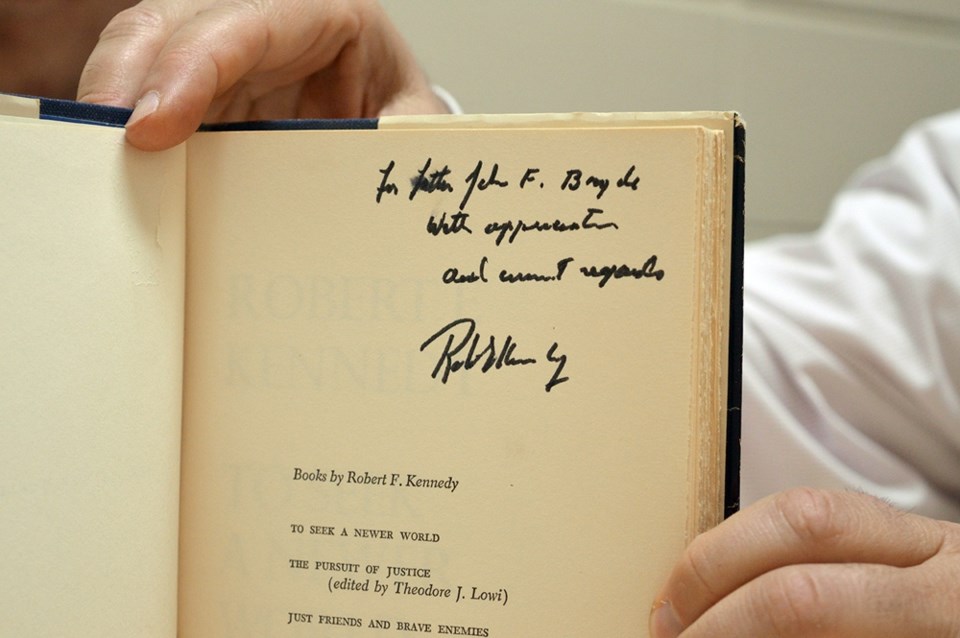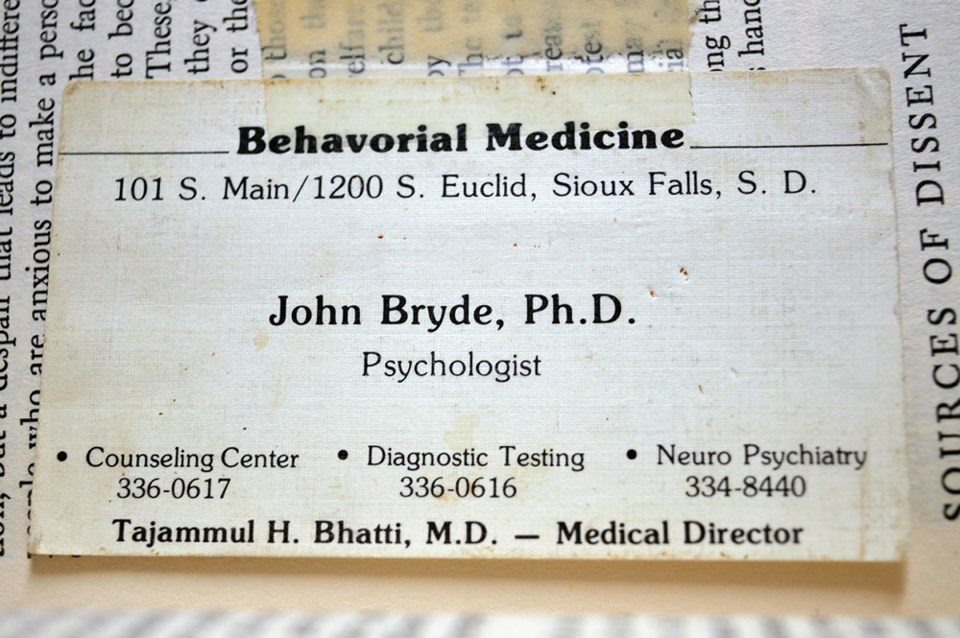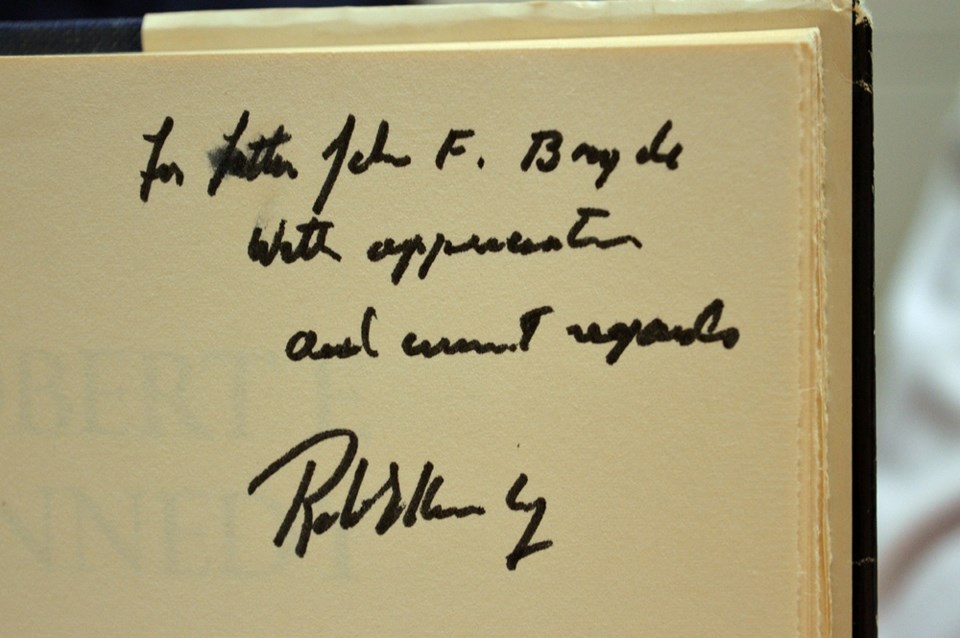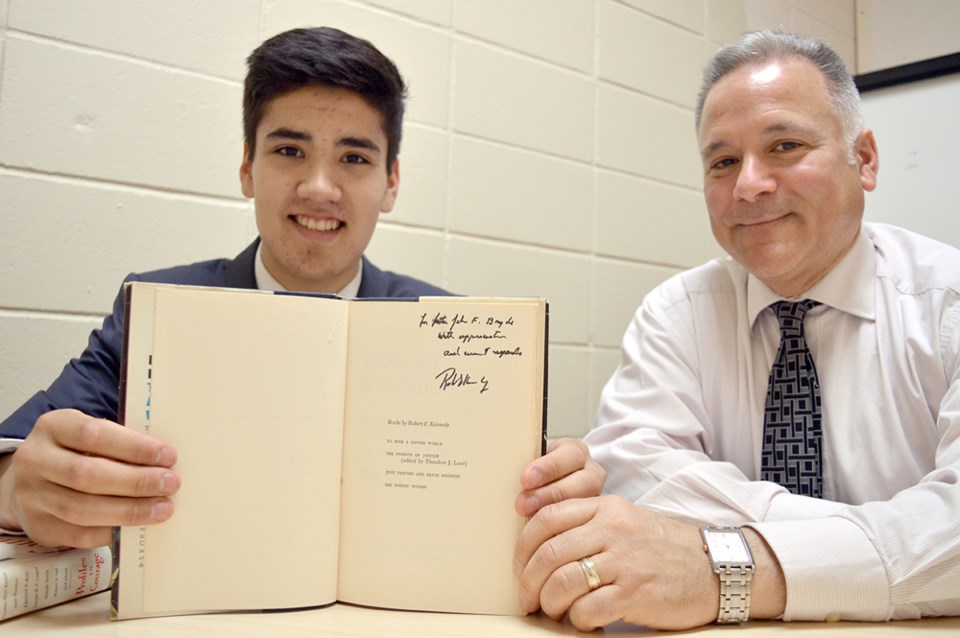History buffs, handwriting analysts, and forensics experts — now’s your time to shine, because we have a case for you.
The mission: figure out if this is Robert F. Kennedy’s signature.
It all began when Squamish teenager Erik Wendland ordered a book from an online retailer that deals in used library books.
“Erik is quite a history buff,” says his principal at Howe Sound Secondary, Nick Pascuzzi. “He’s very much into the life of Robert F. Kennedy and his older brother JFK. Rather than ordering a new edition, he wanted to get the old original editions.”
At first, it seemed like an ordinary copy of To Seek a Newer World, which was penned by Kennedy in 1967.
But when Wendland, affectionately known around school as ‘The President’ for his habit of dressing in suit and tie, started flipping through the pages, there were a few things that stood out.
First, there was a signature, which showed signs of what appeared to be a perfect match to Kennedy’s handwriting.
On top of being a match to the late politician’s scrawl, the blotting and lack of pixellation on the page suggests that this was handwritten rather than printed.
“[I’m] kind of speechless on it,” said Wendland. “I’m just so interested in the Kennedys.”
“I wasn’t ever expecting to get a signature with it,” he said.
Either it could be a well-executed forgery or it's writing from the man himself — the signature has yet to be officially authenticated.
But the signs seem to suggest that it’s the real deal.

It’s worth noting the person to whom it was addressed.
Written on the book is a message to a man identified as Father John Bryde. Bryde’s business card was also found among its pages.
“For Father John F. Bryde, with appreciation and warmest regards,” reads the message.
Kennedy’s signature is written underneath.
There appears to be at least a passing connection between the two men, according to U.S. government documents.
A search at archives.org turns up a file entitled, Indian Education. Part 1, Hearings Before the Special Subcommittee on Indian Education of the Committee on Labor and Public Welfare, United States Senate, Ninetieth Congress, First and Second Sessions on the Study of the Education of Indian Children.
The document contains the hearing minutes of what was then known as the Special Subcommittee on Indian Education.
Kennedy is listed as its chair. Bryde is listed as an expert witness.
These hearings took place between December 1967 and January 1968 — around the time Kennedy’s book would have been published.
In it, Bryde speaks to Kennedy and other officials about his experience working as an educator of Native Americans.
At the time, Bryde was superintendent of the Holy Rosary Mission School, in Pine Ridge, South Dakota.

The hearing was part of a broader government effort to identify shortcomings in U.S. Indigenous education policies.
Ultimately, this cumulated in the release of what became known as the Kennedy Report.
“National policies for educating American Indians are a failure of major proportions,” the study concluded.
This report cast a critical light on government’s management of its Indigenous peoples, and helped spur the passing of the Indian Education Act of 1972, which included some of the report’s recommendations.
Wendland says that he’ll be treasuring this surprise finding for years to come.
It’s also made all the more special, given that Kennedy is a role model for Wendland, who has political ambitions in the future.
“I knew right away he had a treasure in his hands,” said Pascuzzi “This is a piece of history.”




